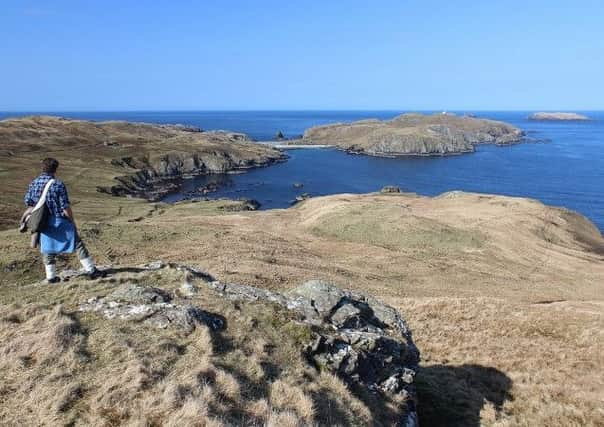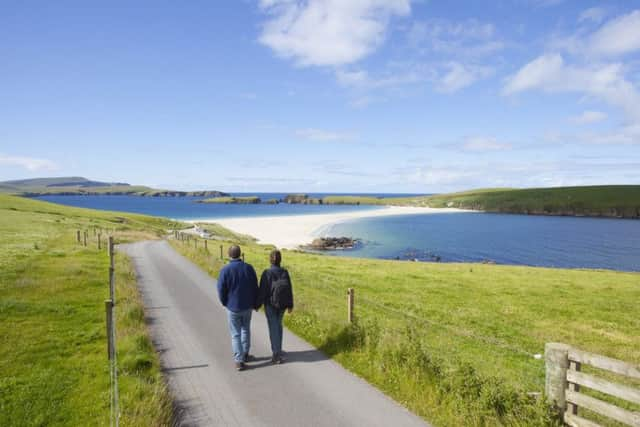5 hidden - but must-see - tourist gems in Shetland


While there are the obvious tourist highlights to visit - Sumburgh Head, Jarlsholf, Scalloway Castle - it would be disappointing for visitors to miss out on some of the more niche, little-known attractions.
But here is a guide to some of the best:
Fethaland


At one time Fethaland, the most northerly point of the Shetland mainland, was the busiest fishing station in the islands with a summer population of 400 fishermen operating in 60 boats, known as “Sixareens” as they carried a crew of six oarsmen. They lived in drystone huts (the remains of which can still be seen) with wood and turf roofs which were removed at the end of the season, the whole boat’s crew living together in one hut. The boats would venture 50 miles out to the edge of the continental shelf, looking for cod & ling that would be brought back to be split, dried and salted.
Advertisement
Hide AdThe area was settled from prehistoric times, the 1m high walls of a large house situated on the lowest part of the peninsula, with cells within the walls. Vikings also mined a soapstone quarry nearby.
Ness of Burgi


An Iron Age stone blockhouse or promontory fort, built on a narrow peninsular with the sea on three sides and a defensive system of wall and two ditches on the land-side, giving amazing views including across to Sumburgh Head lighthouse. You are able to enter through a low entrance to the gatehouse area and the three surviving cells. Very atmospheric, especially with a strong wind coming from the south & whipping the waves up, it’s easy to imagine yourself transported back over 2,000 years to the fort’s heyday! A little effort is needed to get there, including clinging to a chain rail at one point, but well worth it.
Stanes of Stofast
The Stanes (stones) sit above the east cliffs of the stunning Lunna Ness peninsular. Originally a 2,000 tonne boulder, lifted by the massive power of an ice-age glacier (probably from Norway), and dumped where it now sits before being split in two by frost action. The rocks have been weathered over the years into curious shapes and have even been identified in Shetland folklore as Trowes (Trolls) who were caught out at daybreak and turned to stone!
Staneydale Temple
The “temple” is estimated to be possibly as much as 4,500 years old, so perhaps the oldest surviving structure in Shetland. Built of massive stones with a large oval central room approximately 10m x 14m, with six recesses or alcoves off it, it was called a temple as it resembles similar structures found in Malta which were identified as such. It is in any case too large to be a single dwelling, and post-holes point to the previous existence of a great timber roof. There are also two ruined houses, built slightly later, nearby.
St Ninian’s Isle
St Ninian’s is one of the finest sand tombolos in Europe, and it is the largest active tombolo in the UK.
Advertisement
Hide AdThe chapel on St Ninian’s Isle is famous for the “treasure” found in the late 1950s - 28 Pictish silver objects and the jaw bone of a porpoise which were buried under a cross-marked slab close to the altar.
The chapel which is visible is not the earliest chapel on the site. There are traces of a wall beneath it. The dedication to Ninian is thought to be late and not contemporary with the founding of the chapel.
Haltadans Stone Circle
Advertisement
Hide AdOn the beautiful island of Fetlar, known as “the garden of Shetland”, is the Neolithic Haltadans stone circle consisting originally of 38 outer stones (22 are still fixed), an earthen inner ring and two rectangular stones in the middle. Local legend has it that the outer stones were trowes (trolls) dancing to the music of a fiddler and his wife (the two central stones), the whole group of them being so carried away that they failed to notice the rising sun and were turned to stone as dawn broke.
